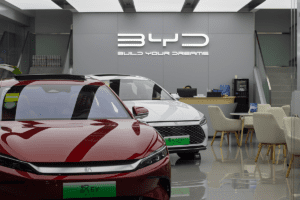Rethinking knowledge transfer as experienced underwriters retire

P&C insurance industry professionals need to rethink underwriting knowledge transfer, particularly as experienced underwriters retire and remote/hybrid work becomes the norm.
The approach should be both systemic and cultural. Otherwise, the impact is quite restricted and heavily reliant on the quality of the interaction and the behaviours of the people in it, explains Pat Caldwell, chief people officer at insurtech Send.
“I think there’s a perception that knowledge transfer involves an experienced person wheeling their chair over to a less experienced person’s desk and sharing all the pearls of wisdom they’ve developed about a certain topic or task,” Caldwell tells Canadian Underwriter. “And, to an extent, there probably was some knowledge transfer that happened during that interaction.”
Given the exodus of underwriting talent and in-office gaps between fresh grads and experienced underwriters, effective knowledge transfer is crucial.
Caldwell and Georgi Munger, global head of Midcorp casualty and underwriting practices at Allianz Commercial, were among speakers discussing the widening gap between new and experienced underwriters during a Send ‘Infuse’ webinar, Finding and Keeping the Best Underwriting Talent in May.
“It’s our biggest challenge, for sure,” Munger said during the webinar. “For us…about 70% of our underwriters are fully remote. Zero of our associate grads are remote.
“So, the number of associate grads paired up with an experienced underwriter who actually come to the same office is the challenge.”
Munger says her company prefers to place recent college grads in its larger offices, working two or three days a week remotely. But at the same time, most mid- and late-career underwriters are full-time remote workers.
Finding the right balance
“We work to consolidate in-office days across the team, bringing remote workers in for specific workshops and meetings, but also by bringing our early-career underwriters out to the field often for broker meetings, field surveys, etc.,” she tells CU. “It takes effort and coordination, but is essential to function as cohesive teams and provide early-career colleagues meaningful experiences.”
Caldwell suggests rethinking knowledge transfer as a “one-to-many activity rather than a one-to-one activity. In practice, that means creating knowledge hubs and clear documentation on as much as possible, and allowing for transparency across the widest possible number of people that could gain some benefit from that information.”
Another way is to balance the learning needs of others and support both synchronous and asynchronous information exchange, he says.
“In a previous company, whenever we would run internal training sessions, we would have a memo or write up all of the training available asynchronously and accessible to everyone in the company, as well as both opt-in live training sessions and on-demand recorded training sessions,” Caldwell explains.
“Outside of appealing to a broader base of learning styles and maximizing reach, it also provides a great way to bridge boundaries between office, hybrid and remote team members in a way that doesn’t create an ongoing demand of work in perpetuity.”
Looking to the future, Munger says it’s important to recognize the industry is changing, as is how and where we work. “When we’re recruiting our associate grads, we’re not looking to build clones of our late-career underwriters,” she said during the webinar.
Allianz Commercial’s most recent associate grad class came from a variety of backgrounds and education experiences, including several risk management majors from large insurance schools, but also those with media studies, economics, math, marketing, finance and communications majors. The insurer encouraged the educationally diverse group to work together, learn in different ways and created a team to blend their strengths.
“How underwriters used to learn — think paper [underwriting tools], manual calculations and pro-rata wheels — has shifted,” Munger says. “It’s much easier to get to an answer, but harder to understand why and interpret the outputs we deliver.”
Feature image by iStock.com/Drazen Zigic



